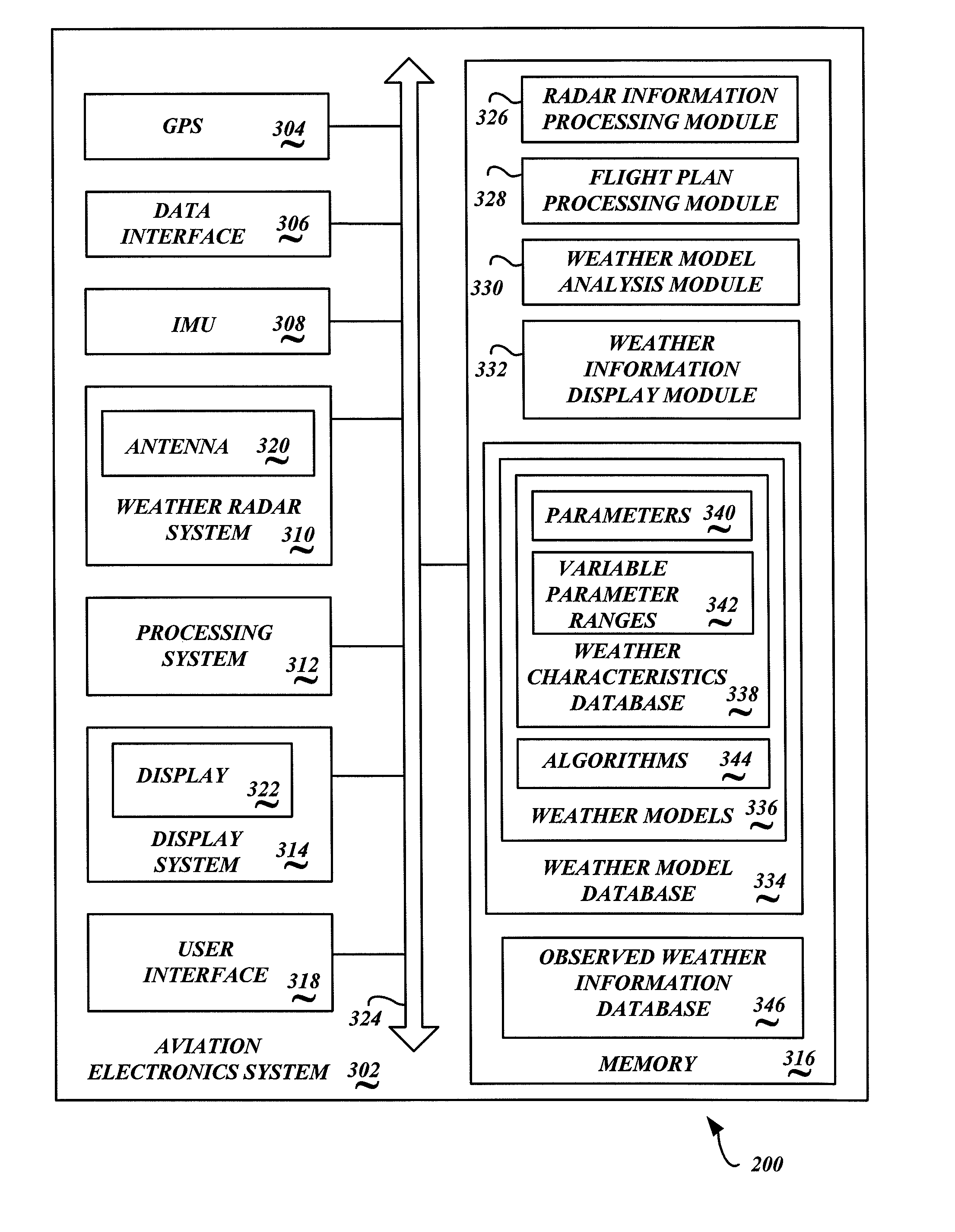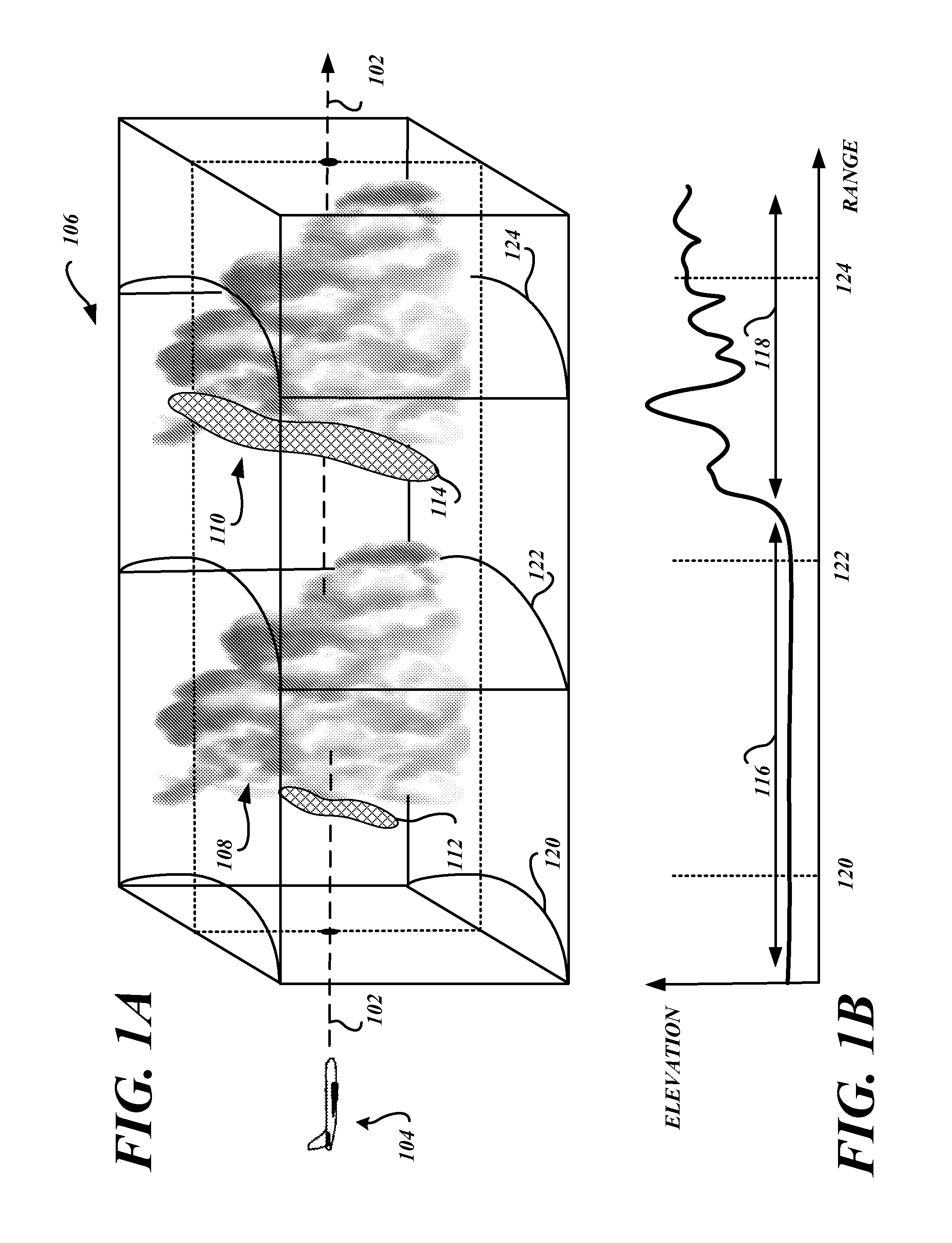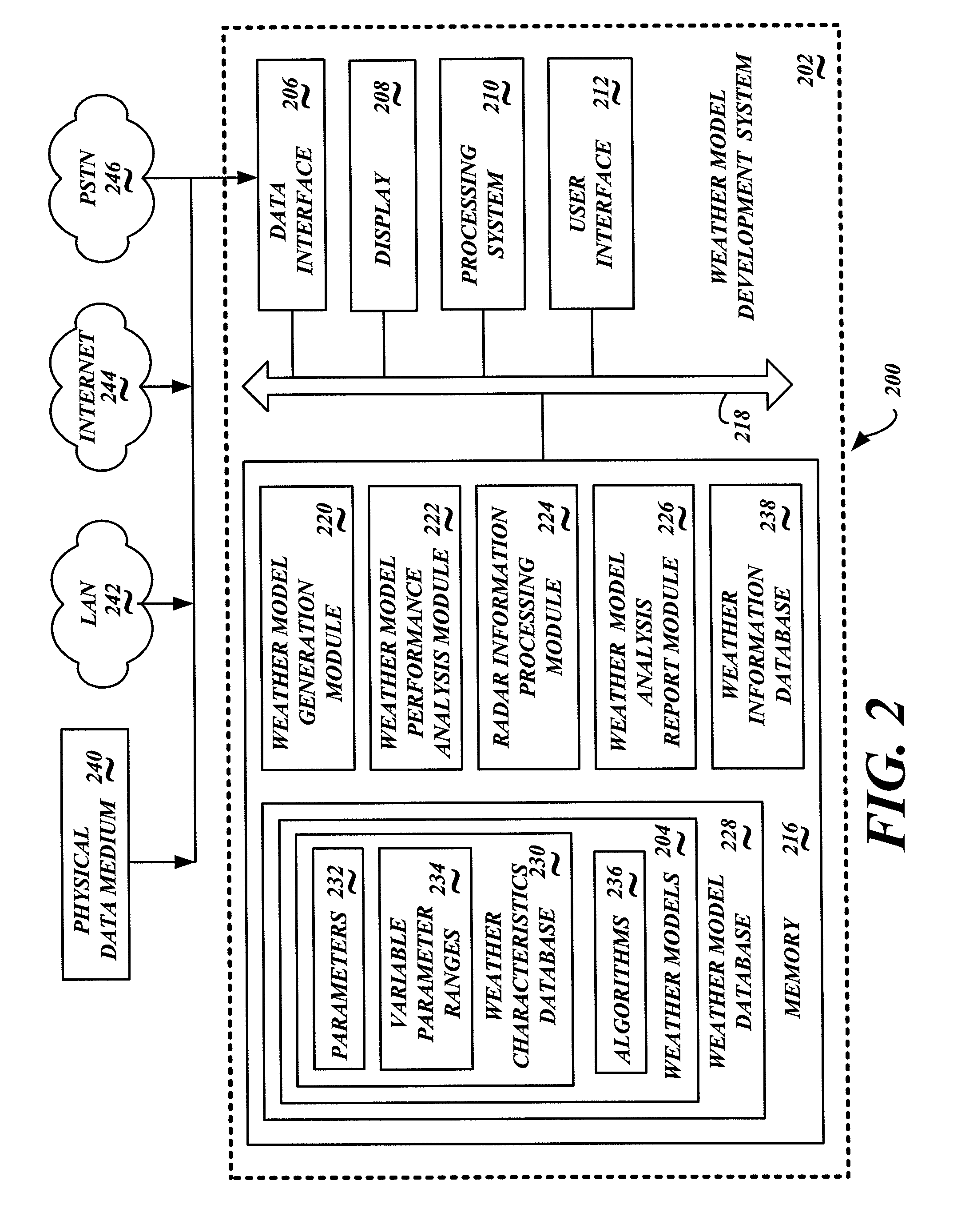Systems and methods for assessing weather in proximity to an airborne aircraft
a technology for assessing weather and airborne aircraft, which is applied in the direction of climate sustainability, instruments, measurement devices, etc., can solve the problems of not being able to provide the above-described aircraft weather radar system is not particularly sophisticated in providing analyzed information to the crew, and the system may not always present the most reliable and useful information to the crew
- Summary
- Abstract
- Description
- Claims
- Application Information
AI Technical Summary
Benefits of technology
Problems solved by technology
Method used
Image
Examples
Embodiment Construction
[0021]FIG. 1A is a perspective view of a portion of a planned flight path 102 of an airborne vehicle, such as an aircraft 104 or the like, through a region of space 106 having radar-detectable weather, such as the two storm cells 108, 110. FIG. 1B is a profile view along the planned flight path of the aircraft 104. Here, the aircraft 104 will be traversing through weather that is over very different geographies. The aircraft 104 may commercially transport goods and / or people. The term “weather” generally refers to any type of weather radar detectable weather phenomena, such as, but not limited to, storm cells, turbulence regions, lightning, precipitation, hail, snow, wind shear, icing conditions, and the like that the aircraft 104 may encounter.
[0022]Associated with each storm cell 108, 110, in this illustrative example, is a turbulence region 112, 114, respectively. The illustrated turbulence region 112 resides along the front side of the storm cell 108 and generally lies along the...
PUM
 Login to View More
Login to View More Abstract
Description
Claims
Application Information
 Login to View More
Login to View More - R&D
- Intellectual Property
- Life Sciences
- Materials
- Tech Scout
- Unparalleled Data Quality
- Higher Quality Content
- 60% Fewer Hallucinations
Browse by: Latest US Patents, China's latest patents, Technical Efficacy Thesaurus, Application Domain, Technology Topic, Popular Technical Reports.
© 2025 PatSnap. All rights reserved.Legal|Privacy policy|Modern Slavery Act Transparency Statement|Sitemap|About US| Contact US: help@patsnap.com



